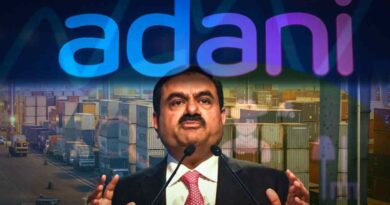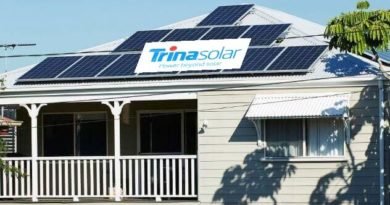“Govt must bring green hydrogen blending to create demand in India” – Dhiman Roy, CEO, GreenH
The journey of green hydrogen is a dynamic and evolving narrative, both in India and globally. To delve into the intricacies of this promising clean energy source, Subhash Chandra Yadav from I Am Renew sits down with Dhiman Roy, CEO of GreenH Electrolysis—a strategic joint venture between Spanish powerhouse H2B2 and India’s GR Infra. In this insightful conversation, Dhiman unpacks all the contours concerning the development of the green hydrogen sector while revealing the technological prowess of his company, the projects done so far and the experience of its parent firm. Excerpts:

1. What is GreenH and what is its mandate in the Indian market?
Dhiman Roy: GreenH is a JV between H2B2 Electrolysis Technologies and GR Infra. H2B2 is a Spanish electrolysis technology provider and has been into the hydrogen business for the last 9 years. They came together in November 2022 to set up GreenH under which we have set up a 100MW PEM electrolyser manufacturing plant in Jhajjar Haryana. Then we were awarded the first hydrogen train project in India which is in the commissioning phase right now.
We have a clear purpose to play a vital role in decarbonisation and energy transition of our system to ultimately lead to a sustainable future. On the business side, GreenH started with PEM technology and plans to bring in three other commercial technologies very soon. We hope to launch the alkaline technology next year. June 2027 onwards, we plan to launch two game changer technologies which are AEM and Solid Oxide for manufacturing in India including stacks. We have an outlay of about Rs 280 crores to set up the process for these technologies in two phases.
2. What differentiates GreenH from the rest?
Dhiman Roy: GreenH would be offering all the four technologies that are commercialized today. We want to deal with tailor made customized solutions for our plants without bothering about technologies because we have all four. This is the very unique & differentiating factor of GreenH. There are very few companies worldwide that have all these four technologies.

Speaking about the business sector, in India, you would see that early projects are in the mobility sector. Players like NTPC, Kochi shipyard, Indian Railways etc. have green hydrogen projects and some of the automobile firms are also getting into hydrogen cars. There are two sectors who are mass consumers of hydrogen today. The energy firms have plans to shift from grey hydrogen to green hydrogen with regards to some of their usage. We see some tenders in the market from IOCL, BPCL, HPCL, GAIL etc. Then there are fertilizer companies too. Going forward, we also eye sectors like steel and cement that are finding difficulty in decarbonizing processes. Government schemes like National Mission on Green Hydrogen and PLI are also aligned for significant growth.
3. How do you assess the Indian Green Hydrogen market?
Dhiman Roy: There are lots of discussions & announcements but very few real projects. Most of the major projects are in the tendering process and awarded projects are almost nothing. Only small pilot projects are to be seen. Large scale projects that would create demand are missing till now. We think that in the short term, the government can do a few things that can create hydrogen demand. Once demand is created, projects will come automatically. This will bring down the cost of hydrogen as well. India is one of the four major hydrogen markets worldwide; along with Europe, America and Australia.
4. Do you see the green hydrogen being just government driven?
Dhiman Roy: Yes, it is government driven in the policy . Talking about the real projects, many private projects are happening as private companies have to attain their ESG goals. It’s a mix of things as of now. India is already the third largest hydrogen user in the world after China and the USA. 98% of hydrogen comes from fossil fuels. Our focus has to be on green hydrogen.
5. Your parent company H2B2 is already a conglomerate in Green Hydrogen specifically. How do you see the space here?
Dhiman Roy: H2B2 is working in its geography and GreenH will work on its own. We are very optimistic as green hydrogen is viable for decarbonisation and net-zero targets. The feedstock of green hydrogen is solar energy for which the government has a solid policy in place for 500GW which will in turn help the green hydrogen sector. In the National Green Hydrogen Mission, the government has a clear target of 5 MMT per annum. A lot of things are happening on announcements but we need actions for demand creation. A mandate for blending green hydrogen with grey hydrogen is necessary. Government can make green hydrogen use mandatory for some industries too which will propel the market. The target of 5 MMT in 5 years means 120-130 GW of electrolyzer capacity and that needs step wise progress. The development of the carbon market can also create cost competitiveness for green hydrogen which is proven in Europe. Biofuels can also propel green hydrogen sector & we have a strong analogy there too. Today, green hydrogen is in the same scenario as solar in 2008-09.

6. What support do you expect from the government?
Dhiman Roy: In the last budget, we were expecting some kind of mandate especially on the blending side. Green hydrogen and grey hydrogen have the same calorific value and could be easily blended. We can start with 5% and it’s scientifically proven that blending can go upto 18%. That would create demand immediately and projects will come up fast; this can have a cascading effect on the sector.
7. How do you think the supplier base could be strengthened?
Dhiman Roy: The biggest challenge is the price of the green hydrogen which is higher than grey hydrogen. So why would anyone buy green hydrogen? There has to be some policy support like incentives to bring down the price. We did 1- MW electrolyser for Indian Railways’ project. We have created a base now and this is a foundation stone for us. If we get more projects, the supplier base will be solidified.
8. What’s the efficiency of GreenH in manufacturing green hydrogen?
Dhiman Roy: At the parent level we have been selling electrolysers for 9 years. One MW PEM electrolyser of GreenH produces 18 kg of green hydrogen per hour. We use 55 units of electricity in the production of 1 kg of green hydrogen. We have electrolysers installed at 19 projects worldwide and our efficiency is evident from the data of real time production from real time projects. The problem is that many players claim absurd numbers. For example, one of the players held that it can produce 1kg of green hydrogen in 48 units of electricity which is incorrect. They can’t show a single project where they have achieved this.
9. What are the other key challenges that need to be addressed for successful growth of this sector?
Dhiman Roy: Well, skilled manpower will be a big challenge in days to come. Today, there are very few green hydrogen projects in India. But when hundreds of thousands of projects come up, where will you get the manpower from? We need training & skilling of manpower in green hydrogen. Secondly, India must create a solid vendor base. Most of the vendors selling technologies & equipment are actually importing them. We need to push for the ‘Make-In-India’ concept for cost optimization that will ultimately impact the hydrogen price. Our technology is from Spain, but we are following ‘Make-In-India.’ We have almost 60% of ‘Mak- In-India’ in our electrolyser and we imported just the stack. In future for our game changer technologies, we will manufacture stacks too here to make things 100% Make-In-India.




